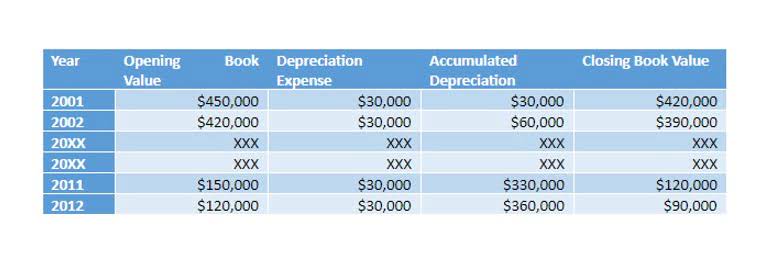
The state rates are wildly different, with some states like Wyoming charging next to nothing, and Alaska charging super-high rates. This report is used to track the amount of Partnership Accounting beer flowing through the brewery, and to impose the federal excise tax. We’ve covered the basicsof how to read the financial statements and understand the chart of accounts.Next, we’ll review a month-end process you can use to make sureyour numbers are complete and accurate. A process is defined as a series ofsteps, followed in order, that will lead to the right outcome. In this case,the right outcome is accurate numbers in the financial reports. Whatever goals you have, monitoring your KPIs and setting goals will help you and your teams develop solutions to achieving them.
Tip #1: Leverage QuickBooks Customization Features to Categorize Expenses

Setting up a network of them can save significant time in your ordering and invoice management system. Fortunately, the system has an integrated option in place to accomplish just that. It’s a simple, guided process to catch any misaligned funds early to proactively correct the mistake. Because QuickBooks works across multiple industries, it has built plenty of customization features for individual businesses to optimize their own platform. Taking advantage of these customizations should be a top priority for any brewery looking to optimize its accounting.
Fixed Asset Accounting

The income statement records sales when earned, and expenses whenincurred, regardless of whether brewery accounting cash was received or paid out. Before that hoppy, foamy brew meets your customer’s glass, a number of practical processes have to happen — ordering materials, inventory management, fermentation, and more. Some of us might have a knack for numbers and details, but that isn’t everyone’s speed.
yes, show me how Ekos can streamline my beverage production!
- That means you’ll need to go in, ideally every month after you receive your bank statement, to reconcile your individual accounts.
- This is calculated by taking the difference between revenue and COGS — AKA, what you have to cover overhead.
- QuickBooks might be an accounting software, but its integrations with other platforms are game-changers.
- When it comes to accounting, QuickBooks organizes itself around items that describe the products and services your business sells.
- Join thousands of other food businesses who receive new insights and tips.
- If so, the brewery will have to write them off – which doesn’t happen with most fixed assets.
- Setting up how you reconcile your accounts receivables (AR), or simply put, how you ensure you collect payment from customers will be an important part of your accounting process.
Start with a rolling 90-day forecast to ensure you have sufficient operating capital to get through your production, inventory, and AR cycles and extend the forecast horizon as needed to plan for seasonality or downturn. Here are five brewery accounting best practices for cash flow management and accounting. More detail may be preferable, howeverthis will take more time for your bookkeeper to record the transactions intothe proper accounts. Start with the kind of reporting you need to see in yourfinancial statements and build the chart of accounts accordingly. For those who need some brewery accounting assistance, Ekos’s Hunter Snellings partnered up with Maria Pearman, CPA for a webinar.


You’ll also learn how you can use technology to simplify your accounting process and save time on manual tasks. Brewery accounting is the practice of tracking and managing all financial activities related to a brewery. This includes recording transactions, creating reports, reconciling accounts, and other tasks necessary for proper management of finances. It is essential for any brewery owner or manager to set up their accounting system properly in order to keep track of their expenses, income and cash flow. A well-managed brewery should have an efficient accounting system that can easily handle day-to-day operations as well as long-term planning. Setting up your own accounting system will help ensure accuracy and reliability when it comes to making important decisions about your business.
Maximize Tax Deductions with Brewery Accounting Software
- Depending on your excise tax liability, this report will be filed quarterly or monthly.
- The list of payment processing systems integrating directly with QuickBooks is long.
- But any brewer knows that ultimately, the input into those processes and statements has to come from every part of the business.
- After establishing a chart of accounts within your accounting system, you’ll need to start recording transactions related to your brewery’s finances properly.
- Reviewing these figures weekly allows you to spot trends early, such as rising expenses or slow sales periods, and make the necessary adjustments to maintain profitability.
Maria and Hunter shared many actionable takeaways for setting your business up for growth and long-term success. If you need to start with the basics, read on for some best practices when it comes to your accounting processes. Make no mistake—no matter how much you Accounting Periods and Methods integrate it, accounting remains a complex process that will likely require a significant amount of attention and work every month. But at the same time, the right software solution can go a long way toward streamlining these processes and ultimately making brewery accounting less of a headache, and more of a strategic advantage.
- Margin by SKU, distributor, segment, with overhead, without overhead, etc. should all be tracked and reviewed regularly with leadership teams to ensure your product portfolio and pricing are optimized for cash returns.
- The brewery probably buys T-shirts, hats, glassware, and so on from a supplier, and sells them on the premises.
- Second, stale or unused beer may be returned by distributors, in which case it’s also charged to expense through the cost of goods sold.
- In this case,the right outcome is accurate numbers in the financial reports.
- Using brewery accounting software like Beer30, you can easily track the costs of raw materials and packaging for each batch of beer.
- Being able to streamline your accounting and financial reporting means you’re able to focus more specifically on the pieces that make your beer so great.
Know your cash flows and plan for seasonality or downturns
The month-end processshould be clearly written and used as a document to train your bookkeepingstaff. An accounting manager should periodically audit the work of staff toensure that the process is being followed. For an example of a full brewery chart of accounts, visit and enter chart of accounts in the search box.